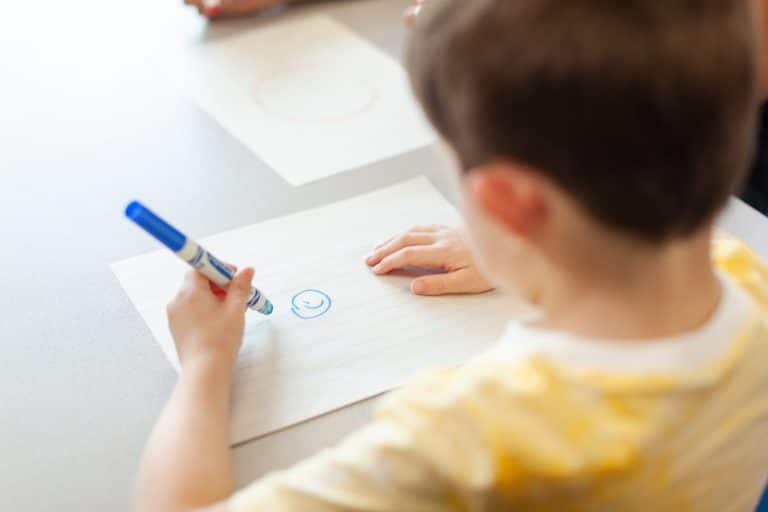
How to Communicate with a Non-Verbal Child
What can cause a child to be non-verbal?
Communicating with a child who is non-verbal or non-speaking can be challenging. There are several reasons that a child may be non-verbal, including autism, cerebral palsy, dyspraxia, selective mutism, and learning difficulties. Those who are non-verbal have equal communication needs, and those needs can be met in several different ways. There are also different methods and ways a can learn and even . Let’s take a look at the common questions surrounding non-verbal children and some methods of .
Can a non-verbal child become verbal?
A non-verbal child may or may not become verbal. While there is no clear-cut answer to this question, examining the reasons they may be non-verbal can help to indicate whether they will use words or not. A diagnosis of a disorder by a professional may indicate a cause for being non-verbal. For example, a child diagnosed with childhood apraxia of speech (CAS), which affects specific brain pathways, has difficulty formulating and speaking the words that they want to say. With skilled speech therapy services, a child diagnosed with CAS will typically communicate verbally.
In other instances, a non-verbal child may receive support to use other modes of communication when a therapeutic evaluation indicates that alternative communication may be best to help them succeed. Some children may respond more positively to forms of communication. For example, a child who is non-verbal may use a speech-generating device, a form of augmentative and alternative communication (AAC), or supplement spoken language with gestural sign language.
Augmentative and Alternative Communication (AAC)
Augmentative and alternative communication (AAC) is a term used to describe methods used to communicate non-verbally and promote language development. These methods work in two ways: augmentative communication means to add to someone’s speech, while alternative means to be used instead of speech. AAC is often used in speech therapy for kids to promote communication for individuals of all ages and abilities. Alternate modes of communication can be classified as low-tech or no-tech and high-tech AAC.
Low-Tech or No-Tech AAC:
Low-tech or no-tech AAC is used for communication without technology. These methods do not require screens or advanced technology to use. They include:
- A gesture and facial expression
- Writing
- Drawing
- Spelling words by pointing to letters
- Pointing to photos, pictures, or written words
A using , during playtime perhaps, can also be a great to practice with a .
High-Tech AAC:
High-tech AAC uses technology to facilitate communication. These use devices such as an iPad or a tablet with customized or pre-loaded words and phrases that the user can activate to communicate with others.
- Using a computer with a “voice” (speech-generating device)
- Using an app on an iPad or tablet
How do you know if a child is non-verbal?
Non-verbal does not equal non-communicating. A child who is non-verbal does not use any spoken language to communicate. However, this does not mean they do not communicate using other means. A child who is non-verbal may vocalize different sounds in response to people or situations. A child who is non-verbal may not vocalize at all but rather use signs, gestures, or augmentative and alternative communication methods. They may use facial expressions, body language, gestures, and eye contact to communicate with others. A child who is non-verbal may use these alternative methods to communicate in place of, or in addition to, speaking verbally. It is important to seek a professional evaluation with a licensed speech-language pathologist to determine a child’s true abilities and needs.
Speech Therapy & Non-Verbal Children
Speech therapy can be a vital component in the communicative success of a child who is non-verbal. Speech-language pathologists (SLPs) are trained professionals who have the tools, techniques, and skills to help children communicate effectively. Speech therapists can introduce a wide variety of ways to communicate. As an expert in speech, language, and communication, a speech therapist can work with families to determine the best fit for a child. Communication is not one size fits all, and each child and family will be different in their preferences. A skilled speech-language pathologist will evaluate your child and provide intervention to meet their unique needs.
Click here to find a location near you.
Article By: Charlotte Spiro, M.A., CF-SLP
Charlotte began her Speech Therapy career in 2022. Charlotte has a passion for working with the pediatric population. Charlotte enjoys working with children of all abilities to communicate and reach milestones while playing, learning and growing. She strives to help all children find meaningful and effective speech and language. Charlotte currently treats patients at Little Steps Pediatric Therapy in Glenview, IL.
The medical information contained herein is provided as an information resource only, and does not substitute professional medical advice or consultation with healthcare professionals. This information is not intended to be patient education, does not create any patient-provider relationship, and should not be used as a substitute for professional diagnosis, treatment or medical advice. Please consult with your healthcare provider before making any healthcare decisions or for guidance about a specific medical condition. If you think you have a medical emergency, call your doctor or 911 immediately. IvyRehab Network, Inc. disclaims any and all responsibility, and shall have no liability, for any damages, loss, injury or liability whatsoever suffered as a result of your reliance on the information contained herein.